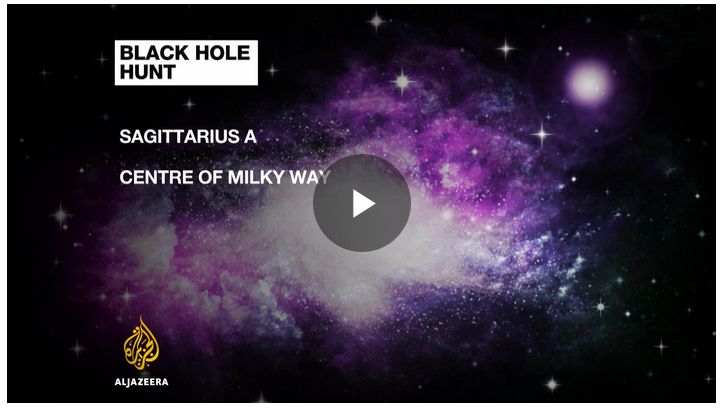Al Jazeera News: Science & Technology – 13 April 2017
Over the past week, astronomers have trained a network of telescopes around the world at a single point at the centre of our galaxy to finally catch a glimpse of a black hole.
For five days, eight telescopes will point at one small spot in the constellation of Sagittarius termed Sagittarius A.
Years of observations have revealed that Sagittarius A is likely the super-massive black hole at the center of our galaxy, and now these telescopes are working together to get the very first picture of it.
Observing a black hole is not easy. It’s surrounded by a large cloud of dust and gas that’s impervious to most light. The telescopes that are making this most recent effort rely on radio waves in the narrow frequencies that can penetrate the dense nebulae around the black hole.
We are joined live from Granada by Heino Falcke, a professor of radio astronomy and astroparticle physics at the Radboud University, to discuss the latest updates.
Original article published in Al Jazeera






